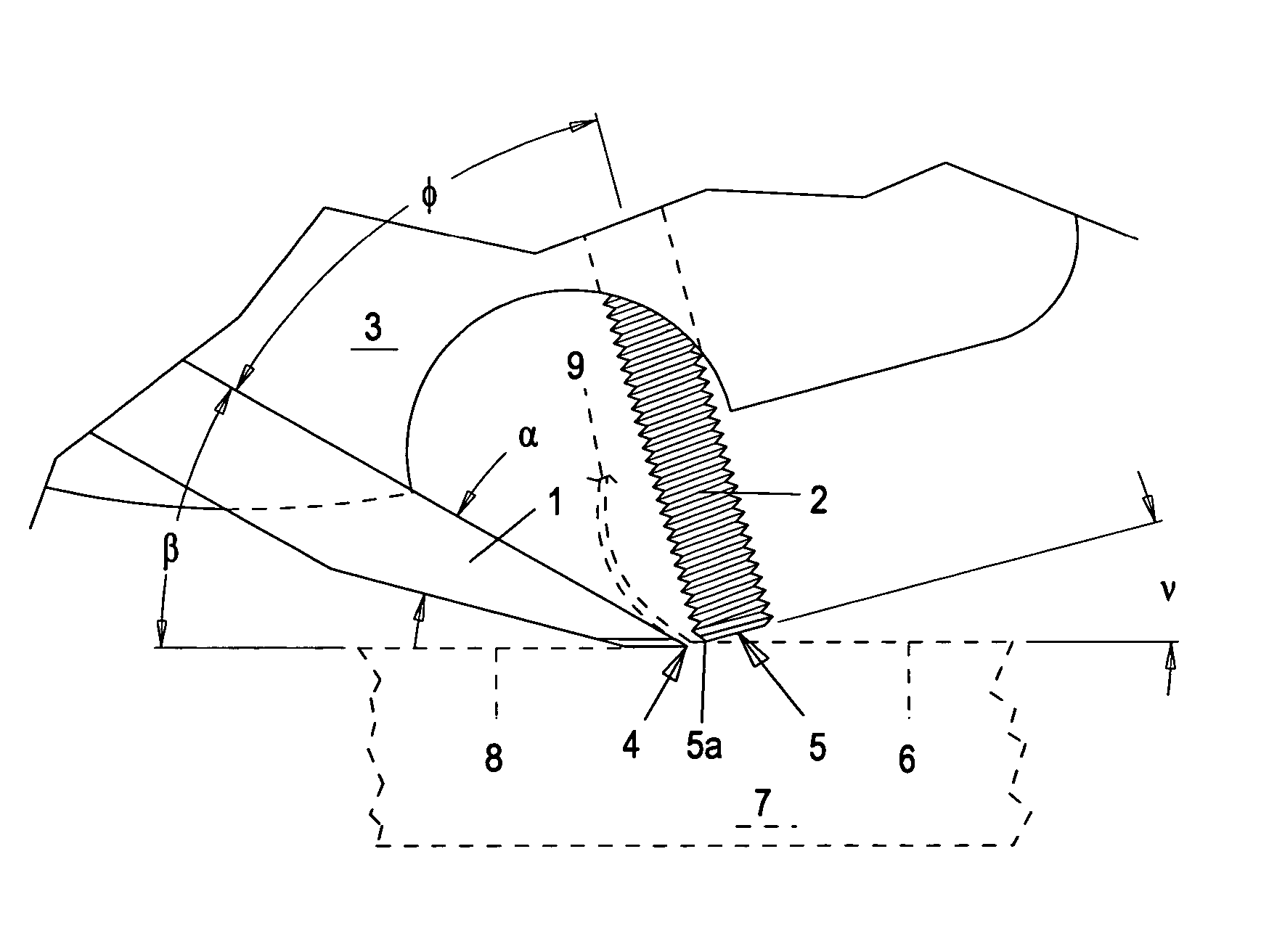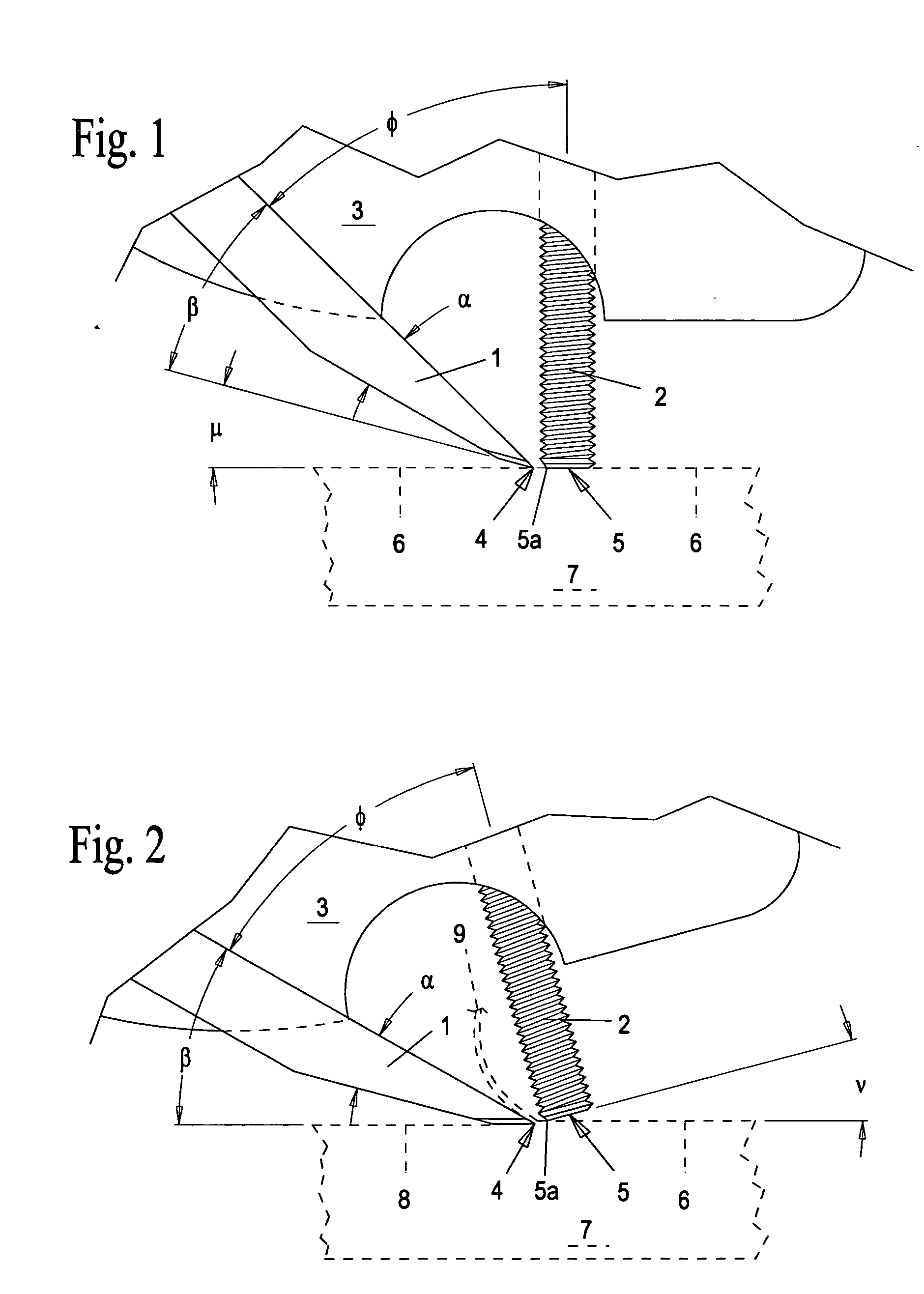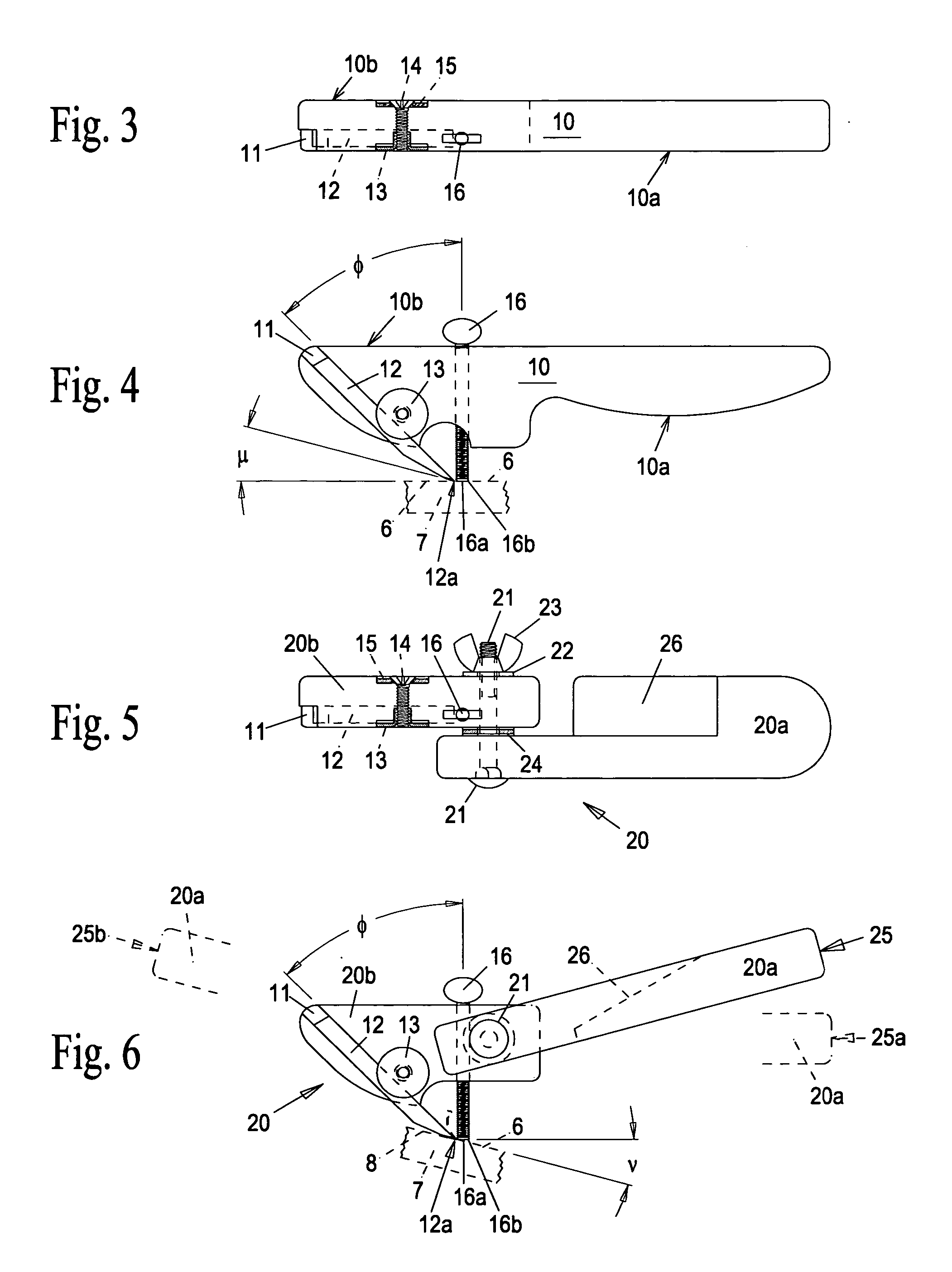Contouring shave
a shave and contour technology, applied in the field of contouring shave, can solve the problems of affecting the smoothness of the finished contour, the inability of the tool the inability of the tool to work in the freeform surface to continuously blend the finished contour, etc., and achieves the effect of reducing the difficulty of shav
- Summary
- Abstract
- Description
- Claims
- Application Information
AI Technical Summary
Benefits of technology
Problems solved by technology
Method used
Image
Examples
second embodiment
[0048] Referring now to FIG. 5 and FIG. 6, the invention is shown comprising a two-piece body or housing assembly 20 of hardwood, molded plastic, die-cast metal, or a combination of these or other materials, with the handle portion 20a and the main portion 20b joined to each other by a single carriage bolt 21, flat washer 22, and wing nut 23. Appropriate friction washers 24 between body portions 20a and 20b permit the handle portion 20a to be positioned and locked at any convenient angular position 25, between 25a (straight) and 25b (fully folded) with respect to the main portion 20b for cutting inside deep hollows or other confined spaces. The handle portion 20a is relieved in area 26 to permit counterclockwise rotation (folding) of the handle portion 20a to within 15° of horizontal. In this position 25b, the entire assembly 20 can be turned 180° around its vertical axis for one-handed use as a push plane where there is limited clearance for the handle 20a in the pull-cutting confi...
first embodiment
[0049] Again, for reference and to illustrate the fundamental relationship of the tool and workpiece during the cutting process, a partial workpiece 7 is shown in phantom in FIG. 6 tilted to an angle ν required for cutting edge 12a to cut into surface 6 and generate a new surface 8. With respect to the location of the thumbscrew 16 and the position and angle φ of the cutting blade 12, the geometry of the main portion 20b of this embodiment and the clamping means for blade 12 are the same for both the one-piece body and handle design 10 (FIG. 3 and FIG. 4) and the two-piece body and pivoting handle assembly 20 (FIG. 5 and FIG. 6). Both embodiments may be used interchangeably whenever there is no interference of the workpiece with the fixed handle portion 10a of the This ability is advantageous in prolonged work sessions, where the slightly different hand gripping positions serve to prevent the hand cramping that can occur when holding any single object tightly for a long period of t...
fourth embodiment
[0057]FIG. 13A shows the crowned cutting edge that is preferred for most applications of the embodiments of the invention, with the exception of the fourth embodiment described above, which is used only for chamfering 90° edges at 45° and requires a straight cutting edge to produce a flat chamfer. The curvature ρ of the cutting edge may be chosen as required by the application conditions, but in general, ρ must always be less than the minimum radius of concave curvature of the surface of a workpiece, to prevent the corners of the blade from leaving sharp grooves or dig-marks in the surface. A good rule of thumb is to choose ρ=twice the cutting width of the blade. For most work, ρ be in the range of 0.125 inches to 2.00 inches, with ρ=0.5 inches being typical for general use. A blade 0.25 inches width with ρ=0.125 is able to cut cleanly even when tilted 45° to either side, which is very useful in shaving the sides of cavities or grooves that are both narrow and deep. A very useful cr...
PUM
 Login to View More
Login to View More Abstract
Description
Claims
Application Information
 Login to View More
Login to View More - R&D
- Intellectual Property
- Life Sciences
- Materials
- Tech Scout
- Unparalleled Data Quality
- Higher Quality Content
- 60% Fewer Hallucinations
Browse by: Latest US Patents, China's latest patents, Technical Efficacy Thesaurus, Application Domain, Technology Topic, Popular Technical Reports.
© 2025 PatSnap. All rights reserved.Legal|Privacy policy|Modern Slavery Act Transparency Statement|Sitemap|About US| Contact US: help@patsnap.com



